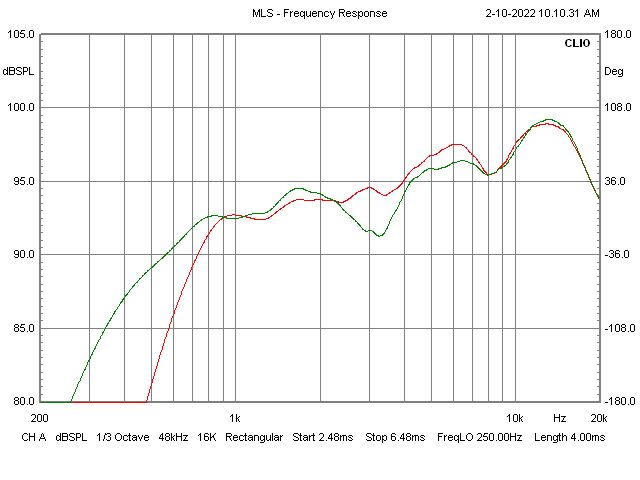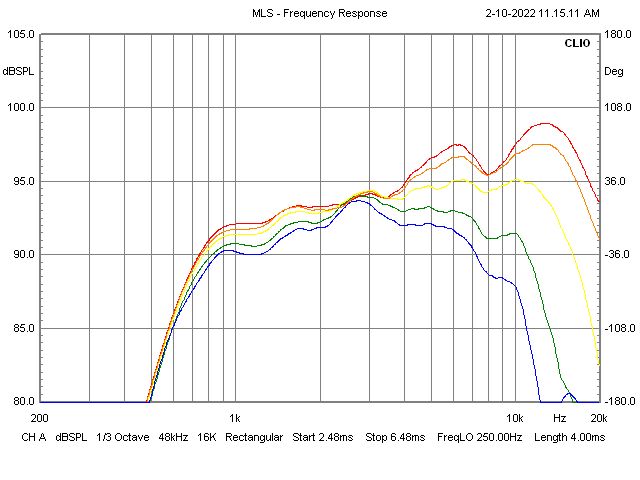To get an idea of it's overall performance you can also check out the NX-Bravo measurements.
Here are some raw responses when in a 8" wide baffle:
On Axis (Red is with the cup installed)

Horizontal axis up to 40 degrees

I currently have plans for a 1" deep version (vs 0.8725" deep) but I haven't had an opportunity to print it out yet or do any testing to see how much different the response might be.
I don't know if I would go much deeper than 1.25" as it might cause cancellation issues. At which point the waveguide would really need to get larger than the current faceplate size would allow.
Sensitivity is right around 92 on the low end (900-1000Hz), but if you cross around 1500-1800Hz, you can get it flat to ~95dB without too much trouble.
Power handling will really depend on how/where you cross it over, and your crossover slope, but its low-end response can also be influenced by waveguide wall thickness, baffle width etc which will really determine the crossover you need.
With the NX-Bravo, we've got it crossed at ~1000Hz with a 3rd-order slope so it has roughly the same ~700Hz -15dB point as the NX-studio, so it can handle quite a lot of power without any issues. (We have yet to burn one up) the woofer will likely run out of x-max before you fry the tweeter.
The rest of the NX-kits have use a 2nd-order slope, crossing around the 1500-1600Hz range
Danny decided against allowing customers to print off their own waveguides.